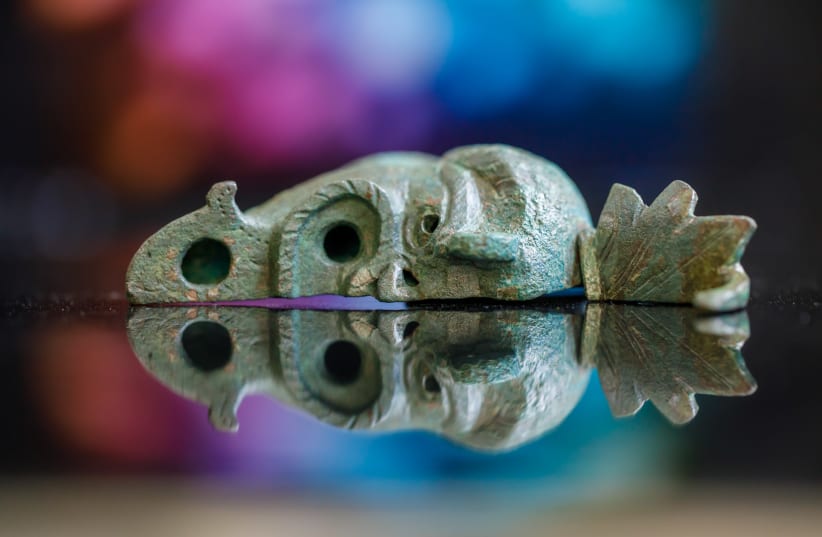The second half of a 2,000-year-old lamp recently unearthed in Jerusalem might have been excavated in an archaeological site in Budapest.
The Jerusalem artifact was found in the remains of a Roman building erected after the destruction of the city in 70 CE.
The site, which today is known as “Pilgrimage Road,” is the path that Jews walked to ascend the Temple Mount as they were performing the commandment to go up to the holy sanctuary three times a year, on the festivals of Passover, Shavuot and Sukkot, according to experts.
After the monumental street was wrecked and abandoned, the Romans did not want to leave the area completely deserted, being that it granted access to an important water reservoir, the Shiloah Pool. A public building was erected on the remains of the street.
Some 2,000 years later, during excavations carried out by the Antiquities Authority in Jerusalem Walls-City of David National Park, the archaeologists found a mysterious object buried in its foundations.
The experts identified it as a “lucky charm” lamp put there on purpose to protect the building and its residents.
“This object is very symbolic,” IAA archaeologist Ari Levy told The Jerusalem Post last week. “It is a lamp, and it could have been used to make light. But there is much more to it than that. It was buried in the foundations of the building to bring luck to the structure and to the people who used it and to guard them.”
Because of its unique shape – a half face with grotesque features, similar to a theater mask – the artifact was described as very rare, one of the few of this kind in the world.
However, just a few hours after the discovery was announced last Wednesday, the IAA was surprised to be contacted by researchers from Hungary, who said they most likely have an identical but mirror-shaped lamp – the other half.
“Nine years ago, in an excavation we conducted at Aquincum (modern-day Budapest), we found a remarkably rare object: at the bottom of the building, we discovered a bronze half-lamp depicting the right half of a face shaped like a Roman theater mask,” Hungarian archaeologist Dr. Gabor Lassanyi wrote to Levy, according to a press release by the City of David.
“Only a few known creations that resemble this exist from this time period, and they sit in museums and in private collections in the world, yet none of them are like these two halves,” he wrote. “It is very difficult to craft in such an accurate way, and therefore, it is likely that the two halves of the lamps were created in the same artisan house and may even have served as a pair to one complete piece.”
The area of modern Budapest was conquered by the Romans during the first century CE. The building in Jerusalem dates back to a similar period.
Who was the artisan who crafted the objects? And was there a connection between the residents of the building in Aquincum and those in the Jerusalem building?
According to the press release, the IAA is first of all working on confirming that the two lamps belong together. Among other solutions, they are considering printing a 3D copy of the object to send to Budapest to see if the two attach well to each other.
“I was incredibly surprised and excited to receive such a response from the Hungarian archaeologist,” Levy said. “From the start, it was clear to us that this lamp was made abroad in one of the European countries. But I could not imagine that I would receive such an incredible message.
“The presence of a similar counterpart in Hungary, an area that was under the control of the Roman Empire at the time, allows us to look at the issue in a much deeper and broader way than we expected.”
